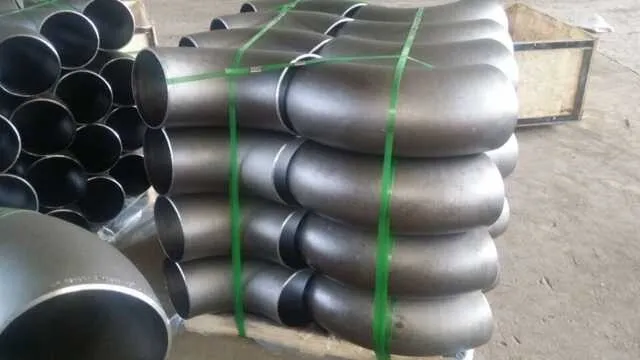-
Cangzhou Yulong Steel Co., Ltd.
-
Phone:
+86 13303177267 -
Email:
admin@ylsteelfittings.com
- English
- Arabic
- Italian
- Spanish
- Portuguese
- German
- kazakh
- Persian
- Greek
- French
- Russian
- Polish
- Thai
- Indonesian
- Vietnamese
- Zulu
- Korean
- Uzbek
- Hindi
- Serbian
- Malay
- Ukrainian
- Gujarati
- Haitian Creole
- hausa
- hawaiian
- Hebrew
- Miao
- Hungarian
- Icelandic
- igbo
- irish
- Japanese
- Javanese
- Kannada
- Khmer
- Rwandese
- Afrikaans
- Albanian
- Amharic
- Armenian
- Azerbaijani
- Basque
- Belarusian
- Bengali
- Bosnian
- Bulgarian
- Catalan
- Cebuano
- China
- China (Taiwan)
- Corsican
- Croatian
- Czech
- Danish
- Esperanto
- Estonian
- Finnish
- Frisian
- Galician
- Georgian
- Kurdish
- Kyrgyz
- Lao
- Latin
- Latvian
- Lithuanian
- Luxembourgish
- Macedonian
- Malgashi
- Malayalam
- Maltese
- Maori
- Marathi
- Mongolian
- Myanmar
- Nepali
- Norwegian
- Norwegian
- Occitan
- Pashto
- Dutch
- Punjabi
- Romanian
- Samoan
- Scottish Gaelic
- Sesotho
- Shona
- Sindhi
- Sinhala
- Slovak
- Slovenian
- Somali
- Sundanese
- Swahili
- Swedish
- Tagalog
- Tajik
- Tamil
- Tatar
- Telugu
- Turkish
- Turkmen
- Urdu
- Uighur
- Welsh
- Bantu
- Yiddish
- Yoruba

ታኅሣ . 13, 2024 09:59 Back to list
class flange
Understanding Class Flanges Types, Applications, and Importance
Flanges are essential components in piping systems, serving as the interfaces that connect various parts of a system, such as pipes, valves, pumps, and other equipment. Within the realm of flanges, the term class flange refers to flanges that have been designed according to specific pressure ratings, commonly denoted as Class. This classification allows engineers and designers to specify the appropriate flange for various applications based on the operating conditions of the system.
What is a Class Flange?
A class flange is defined by its pressure-temperature rating, which governs its performance under a specific set of conditions. The American Society of Mechanical Engineers (ASME) has established standards for different types of flanges, and each flange is assigned a class number based on these criteria. Common class ratings include Class 150, Class 300, Class 600, Class 900, Class 1500, and Class 2500. These classes indicate the maximum allowable pressure that the flange can withstand at a designated temperature, ensuring safe and effective operation.
Specifically, Class 150 flanges are suitable for moderate pressure applications, making them ideal for general utility service. On the other hand, Class 2500 flanges are designed for high-pressure applications, often found in industrial settings where robustness is critical. This classification is essential for ensuring that the appropriate materials and dimensions are selected for specific operations, thereby preventing catastrophic failures.
Materials and Design
Class flanges can be manufactured from a variety of materials, including carbon steel, stainless steel, cast iron, and other alloys. The choice of material significantly influences the flange's strength, durability, and resistance to corrosion and temperature extremes. For instance, stainless steel flanges are often used in corrosive environments, while carbon steel flanges are favored for their cost-effectiveness in low-temperature operations.
Flange designs may vary, but they typically feature one of the following raised face (RF), flat face (FF), or serrated face. The design choice depends on the application and the type of gasket used. Raised face flanges are most common and provide a sealing surface for gaskets, ensuring leak-proof connections.
class flange

Applications of Class Flanges
Class flanges are found in a wide array of applications across various industries, including oil and gas, chemical processing, power generation, and water treatment. In oil and gas pipelines, for example, high-pressure Class 1500 and Class 2500 flanges are used to connect segments of pipelines that transport crude oil and natural gas. The integrity of these flanged connections is paramount to safety and efficiency.
In chemical processing plants, where the handling of corrosive substances is common, Class flanges made from high-alloy materials are employed to minimize the risk of corrosion and leaks. Similarly, in power plants, Class flanges are used to connect steam lines, where pressure and temperature management are critical for the plant's operation.
Importance of Class Flanges
Understanding class flanges is crucial for engineers, designers, and maintenance personnel in ensuring the reliability and safety of piping systems. Selecting the correct flange class based on pressure ratings and material specifications helps to mitigate risks associated with leaks and mechanical failures.
Moreover, proper maintenance and inspection of flanged connections are essential to prolong the lifespan of the piping systems. Regular checks can identify signs of wear and tear, corrosion, or misalignment, which could compromise the integrity of the system. Ultimately, the knowledge surrounding class flanges contributes to the overall efficiency and safety of industrial operations.
Conclusion
Class flanges are a critical component in the design and operation of piping systems in various industries. By understanding their classifications, materials, designs, and applications, professionals can ensure that the right flanges are selected for their specific needs. This understanding not only enhances operational efficiency but also plays a vital role in maintaining safety standards in high-pressure environments. As industry demands continue to grow, so too will the importance of proper flange selection and maintenance in engineering practices.
Latest news
-
ANSI 150P SS304 SO FLANGE
NewsFeb.14,2025
-
ASTM A333GR6 STEEL PIPE
NewsJan.20,2025
-
ANSI B16.5 WELDING NECK FLANGE
NewsJan.15,2026
-
ANSI B16.5 SLIP-ON FLANGE
NewsApr.19,2024
-
SABS 1123 FLANGE
NewsJan.15,2025
-
DIN86044 PLATE FLANGE
NewsApr.19,2024
-
DIN2527 BLIND FLANGE
NewsApr.12,2024
-
JIS B2311 Butt-Welding Fittings LR/SR 45°/90° /180°Seamless/Weld
NewsApr.23,2024











